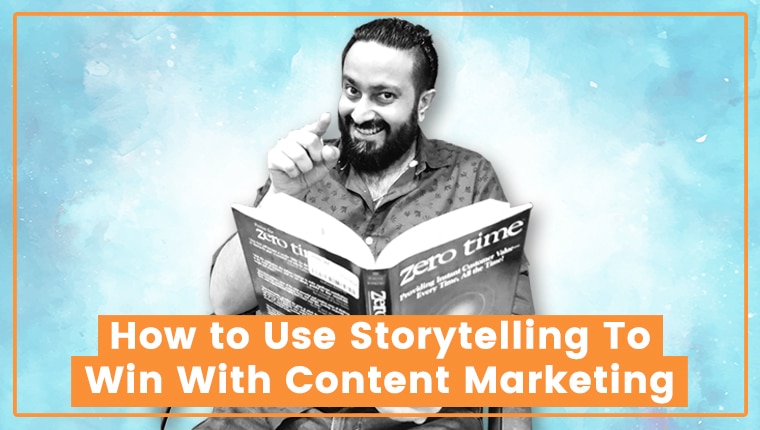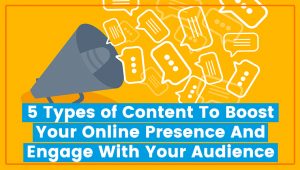Storytelling is a powerful way to communicate with your audience. It can grip their attention like no other, and if the story is something that resonates with them, they’ll want to stick to the end to know how the story ends.
If you have been creating regular content for your online audiences, adopting a storytelling strategy in your messages will not only hook your audiences but will also position you as someone who ‘gets them’.
Here is an 8-step process to build storytelling in your content.
1. Humanize your brand
How do you stand out from your competitors? Does your brand have a memorable story? Do people feel a connection with your brand’s mission?
When building your content marketing strategy, it’s essential to establish why you’re different. Find out what unique story can serve as the foundation for your marketing campaigns and how that can relate back to your product or service. The more authentic your story is, the more excited people will be to work with you.
2. Know your audience
Content marketing, in particular, is a unique blend of audience-centric storytelling. You need to know your audience inside and out: what their goals are, what they struggle with, what drives them forward and holds them back—and how you can align your story with these insights.
This allows you to create content that resonates with your users on a much deeper level and pushes them closer toward their goals while aligning their needs with your product.
3. Define your core message
Consistency is key, and in order to do that, you need a strong message. If you are consistent with your message and define it well, then people will keep coming back for more. You’ll be able to market yourself as the go-to person or brand on a specific topic.
So before you write anything, think about how you want to position yourself so that when someone reads one of your articles they know exactly what they’re going to get from you.
For example, my main topics focus around helping companies become better at marketing themselves online. My core foundation is to inspire marketers to be bolder and put their company out there more than they already have been doing. This can help them grow their business because everyone knows marketing = sales = money. So, if I can help businesses become better at selling their products through content marketing,
I’m not only making them happy but also making myself happy because I’m working with like-minded individuals who want to grow together!
4. Decide what kind of story you’re telling
The right story has a way of engaging your audience and bringing them to your content. To inspire action, you want to give your audience a sense of what’s in it for them if they do what you want. Your job is to convince people that your story will positively impact their lives. You can achieve that with stories by tapping into things they’re already thinking or feeling.
5. Establish your call-to-action
One of your main goals with any story you tell is to get your audience to take a specific action. For example, if you’re trying to convince your audience to purchase something from you, you want them to take action by clicking through and making a purchase. The more powerful this action is for your audience, and therefore for you as well, then the better storyteller you are!
6. Build a story framework
This is the outline of a story; something so simple yet powerful when used properly. By creating a framework for your story you’ll have a guide to ensure your content has a start, middle and end. This will make it easier to develop supporting content and make sure that your message doesn’t get muddled in the process. Not to mention you can use the same framework over and over again if you’re smart about it!
7. Choose your medium of storytelling
Telling a story doesn’t have to be written. Consider which medium would best allow you and your team to share your message in a compelling way, then choose that platform. For example, if you’re talking about a weight loss program, sharing an image of what the person looked like before and after the program is much more powerful than just explaining it.
8. Implement a content distribution strategy
When you’ve come this far, you’re close to being done! Ensure that your content is shared on relevant channels where your target audience convenes. The goal here is to get more leads and conversions, so it’s important to make sure that your content reaches as many people as possible.
In a world of information overload, you need a way to get your message across and be heard. A good way to accomplish that is by telling stories. As they say, stories move people in ways that statistics cannot. It is an effective tool for standing out from all other brands.
Read the article Content Marketing: 20 reasons why it’s important for your business to know the benefits of implementing a successful content marketing strategy.
Not sure where to begin with your story-telling strategy? It can be daunting to figure it all out on your own. Book a free consultation with me, and get your audience hooked on your story and booked on your offer.



